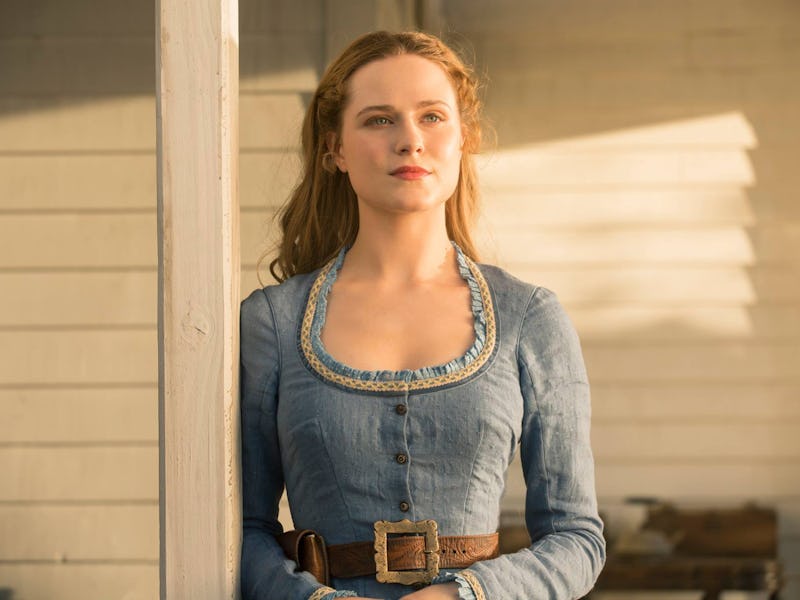'Westworld' Shares DNA With the Best 'Twilight Zone' Episode
The first episode of HBO's 'Westworld' is more than just a nod to 'The Twilight Zone''s "The After Hours."

At first blush, the heroine of HBO’s new robot-Western Westworld seems like the blandest part of the show. She is played with a wholesome cheerfulness by a golly-gee accented, gently smiling Evan Rachel Wood, and in the pilot episode “The Original,” she acts like she lives in the Little House on the Prairie. She has cheerful banter with her loving yet protective father, reunites with her wholesome cowboy love interest Teddy (James Marsden) — though she demurely diverts his advances — and is then brutally attacked by the nefarious Man in Black (Ed Harris) when the men in her family fail to protect her. Because she is blonde and pretty and white and virginal, her rape is obviously more abhorrent than if she was one of the show’s prostitute characters, right? Right?
But before you roll your eyes at the cliche, take a closer look. There is more at work beneath Westworld’s surface, and there is far more to Dolores. In fact, her character becomes the most slyly subversive aspect of the show’s first episode.
Evan Rachel Wood as Dolores and Ed Harris as The Man in Black
The repetitive nature of her story loop (she has the same conversation with her father daily and reunites with Teddy almost daily) calls to mind Groundhog Day, and the fact that her memory gets wiped each night recalls showrunner Jonathan Nolan’s earlier indie hit Memento, but “The Original” and Dolores’s character actually share the most DNA with one of the best Twilight Zone episodes of all time.
Titled “The After Hours,” the episode originally aired in 1960 and focuses on a young woman named Marsha White, who is very much like Delores. She is blandly cheerful and seemingly innocent; her activity for the day is going shopping for a thimble in a department store. Her experience becomes increasingly strange as she seemingly shops on a floor that does not exist and interacts with salespeople who bear an uncanny likeness to the mannequins.
Fifty-year-old spoiler alert: It turns out that Marsha herself is a mannequin. She was taking a break to enter the human world, as the mannequins regularly do, and forgot her old life, just as Dolores wakes up and doesn’t seem to notice that a different man is her “father” one morning. As the Twilight Zone’s final shot cuts to Marsha frozen in her mannequin state once more, Rod Serling enters with a typically ominous closing voiceover:
Marsha White, in her normal and natural state, a wooden lady with a painted face who, one month out of the year, takes on the characteristics of someone as normal and as flesh and blood as you and I. But it makes you wonder, doesn’t it, just how normal are we? Just who are the people we nod our hellos to as we pass on the street? A rather good question to ask … particularly in the Twilight Zone.
Not only are these the same questions that Westworld poses, but that final Rod Serling voiceover is echoed by Stubbs, the security guard played by Luke Hemsworth in Westworld. In the episode’s close, he says of Dolores, “She’s been repaired so many times, she’s practically brand new. She’s the oldest host in the park.”
You can practically hear the Twilight Zone theme play as the camera zooms in on the once-again fresh-faced and innocent Dolores. The played-out storyline of the victimized ingenue victimized is thus turned on its head and transformed into something far more interesting. Westworld lulls the viewer into a false sense of security in order to reveal the strangeness beneath the surface, and promises to be the most exciting series-long Twilight Zone episode we’ve had in years.